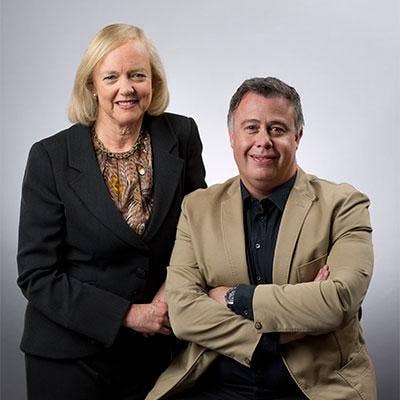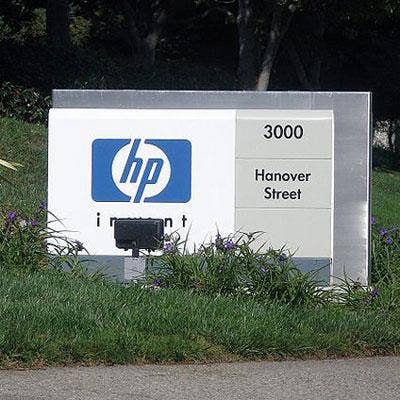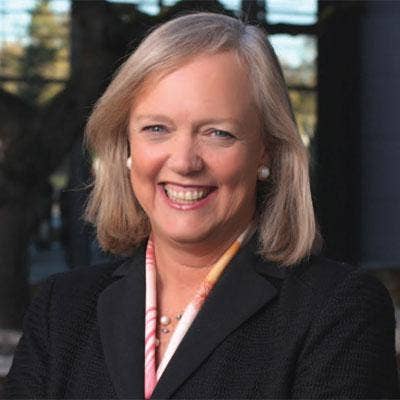10 Things You Don't Know About The HP Split

What You Need To Know
HP CEO Meg Whitman, who will be president and CEO of Hewlett Packard Enterprise and nonexecutive chairman of the HP Inc. board of directors, and HP Executive Vice President of Printing and Personal Systems Dion Weisler, who will become CEO of HP Inc., spoke with CRN about the split and the impact on partners. Here are 10 things from the two top executives that may surprise you about the split.

Two Doors
HP buildings that house employees of both companies must have two separate entrances for each of the independent entities. "The level of detail here is really quite remarkable," said Whitman. "Legally there has to be two entrances to buildings. I was in the Netherlands where we have a lovely building on the outskirts of Amsterdam that has one entrance. That has to be two entrances as of Nov. 1."

Separation Management Offices
HP has about 450 employees in three separate management offices (SMOs) (Hewlett Packard Enterprise, HP Inc. and Hewlett Packard Corporate) dedicated to overseeing the split, which involves some 750 legal entities in 166 countries. "We articulated from the start that we would set up a separate group of folks -- the separation management office -- to deal with the day-to-day mechanics of separating these two companies," said Weisler. "Ninety-nine and a half percent of us are focused maniacally on our business. That is what we need to do. We can't lose sight of that."

Sales Operations Improvements
Both companies are revamping major business processes, which is driving dramatic cost savings. Whitman pointed specifically to a move to split sales operations. "Splitting that has been very interesting, because what we found was there were pockets of sales ops with people at headquarters and regions and in our India Global Services operation," she said. "No one had end-to-end accountability for all these people and all the steps and processes. So what we are going to do is make sure that we've got an end-to-end process that is simpler for partners, easier for us to administer and, oh, by the way, it is going to take less people."

New State-Of-The-Art IT Systems
Both companies are investing in new state-of-the-art IT systems that could provide each of them with a competitive advantage. "Meg and I are investing a lot of money to completely bring ourselves to the new style of IT," said Weisler. "So that when a partner's PRM system is linked with ours and we are seeing opportunities coming into the CRM system, it will actually trigger automatically back-end forecasting, and it will place an order. It won't touch anybody. It will go straight to the manufacturing plant. That will change the speed at which we operate and it will go from where we are today to leaders in how that IT process moves in the future."

The Power Of The HP Supply Chain Remains Intact
Whitman said competitors' claims that HP will lose buying power with suppliers as a result of the split is patently false. "That is ridiculous if you think about it for more than a minute," she said. "That is not true. Because we will go to those suppliers as one. Think of it as a buying agreement. So we will go to all of the memory suppliers and all of the screen suppliers and plastics suppliers, and utilize our weight in the marketplace as we always have."

HP Is Getting Ready To Take The Show On The Road
As part of the split into two new publicly traded companies, HP is planning a road show of sorts that will take place in the fall. "It is almost like an IPO road show," said Whitman. "We will actually give [three years of audited] financials at that road show, which will probably be September or October."
Weisler, for his part, said "job No. 1" is to make sure that both companies can close the books to officially separate as of Nov. 1. Once that split is complete, he said, you can expect to see both companies to pick up the pace of the "transformation process."

A Sharper Focus On Costs
Before the split, each of HP's businesses has been allocated a certain percentage of administrative costs based on an "owned operating profit" level. Those allocations are now being looked at closely in the wake of the split. "What falls out of that is, 'Oh my Lord, I didn't realize I was paying this for this and that,' " said Weisler. "As you separate, you say, 'These things are important to me, I am going to double down on them' [or] 'That is actually not important to me and I am not going to do it anymore,' and each of the companies is doing that."

The Two Companies Will Still Team On Joint Bids
Hewlett Packard Enterprise and HP Inc. will still team on joint bids involving deals that may include HP servers and client systems. "If there are partners who want to quote servers and PCs together for a deal, we are each other's best friends, and we will certainly come together to provide that quote as we do today," said Whitman. That is no different than when HP's services arm bundles a full panoply of hardware, software and services together for customers, said Whitman. "We know how to do that," she said. "We shouldn't miss a beat here on that."

Speed Will Be A Critical Differentiator For Both Companies
Whitman said the power of the two companies moving faster in a market moving at lightning speed is a critical differentiator in the current IT environment. "We are going to be faster, we are going to be on the market trends faster," she said. "The R&D engine will move more aggressively and we will be out there shaping trends as opposed to reacting to trends."

Working Together
Hewlett Packard Enterprise CEO Meg Whitman and HP Inc. CEO Dion Weisler will both still be working out of HP's Palo Alto, Calif., headquarters. "We actually are both going to be on campus in Palo Alto," said Weisler. "We will be [on] one side of the campus and Hewlett Packard Enterprise will be on the other. So Meg and I will be kind of seeing each other every day."